The Basilisk : a Legendary Evil Serpent
The Basilisk, is a mythical creature most often represented as a giant snake 🐍. It is even said that this enormous beast is the king of snakes. Being one of the most feared mythological monsters, the Basilisk would have the power to kill with a simple look; like the gorgons of Greek mythology.
Although it was popularized by J.K. Rowling and by its appearance in the second film of the Harry Potter saga entitled The Chamber of Secrets, this monstrous snake has been part of European mythology and medieval folklore since ancient Greece 📖. This mythical beast is notably present in Romanian culture under the name of Vasilisc. And the king of snakes is also very often represented with feathers and wings.
From the origin of the myth of this legendary monster to how to kill it, including its appearance in Harry Potter; in this article you will discover everything there is to know about the Basilisk! 🔎
1) What is a Basilisk Snake?
First of all, you should know that there are two types of Basilisks. The first, the best known, is a giant snake. It is the first and oldest representation of the basilisk. It is found in particular in the second Harry Potter film 🧙🏻.
The second representation of the Basilisk is in the form of a half-snake, half-rooster creature 🐓. The latter is called Basilicoq.
Whatever its appearance, in all legends the Basilisk is considered a ferocious and extremely hostile predator, especially towards humans. It is often described as a legendary creature, representing evil in its purest form 😈.
Although they call it "The King of Snakes", some myths mention the existence of several Basilisks using this term in the plural 🤔. It is therefore just as correct to say "the" basilisk, or "a" basilisk.
Although it feeds mainly on animals such as goats and deer, the Basilisk can just as easily pounce on other prey from tales and legends: unicorns, pegasi, fairies, ... As a man-eater, it also does not hesitate to visit peaceful villages at night in order to find its next meal 😨.
"Unleash your bold side with our Personality Snake Ring! Crafted from premium alloy and inlaid with shimmering gems, this eye-catching ring is available in US sizes 6, 7, and 8. Make a statement and let your unique style shine—get yours today!"
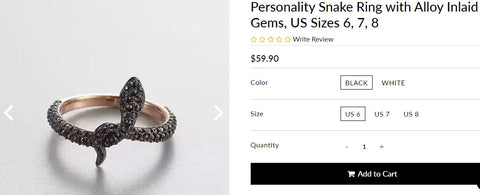
Does the basilisk exist?
No, the basilisk does not exist. It's a mythical creature from ancient folklore, often described as a serpent with a crown-shaped crest on its head and a deadly gaze that can petrify its victims. While there are real reptiles called basilisks, they are lizards native to Central and South America and do not possess the supernatural abilities attributed to their mythical counterpart.
2) The Basilisk Serpent
Today we know the Basilisk in its giant snake form, because the latter was popularized by the Harry Potter saga. But this representation existed long before J.K. Rowling wrote her novels 📚. Indeed, it is the very first form that the Basilisk took in myths and legends.
The first mentions of this giant snake date back to Antiquity. If we are to believe the legend, the Basilisk would have been born from the severed head of Medusa, killed by the Greek hero Perseus ⚔️. But some other sources claim that a Basilisk was born from a toad or snake egg, incubated by a rooster.
3) A Plumed Basilisk?
It was only from the Middle Ages that the Basilisk began to be represented as a creature half-bird, half-snake. This chimerical monster (assembly of two animals) called Basilicoq (or Rooster Basil), would also have been born from a toad 🐸 or snake egg, incubated by a rooster.
The Basilicoq is often confused with the Cockatrice (or Cockatrice). The latter is also a monster half-bird and half-reptile, but with the difference that it is born from a rooster egg (yes yes rooster, so it is "very rare" 😅), incubated by a snake or a toad. In addition, even if they are very similar, the two monsters still have differences. The Cockatrice would apparently be a different variety of Basilicoq.
"Cocatrice" became synonymous with "Basil" because of a translation of De Proprietatibus Rerum by Bartholomeus Anglicus, written in 1260 🖋️. John Trevis' 1397 adaptation also replaces the Latin word Basiliscus with Cockatrice.
4) Origin of the Basilisk as a Mythical Monster
Like many well-known fantastic creatures (werewolves, vampires, ...), the Basilisk finds its origin in the cultures and mythologies of certain ancient peoples 💭.
Fortunately for us, the Basilisk never walked the earth! It is only a legend to which many people have contributed 🤨. Despite everything, it is fascinating to note that during Antiquity and the Middle Ages, people firmly believed in its existence.

A) Cobra and Basilisk
Like any legend, that of the Basilisk is inspired by the real world. Some have hypothesized that the cobra could be at the origin of the myth of the Basilisk. Indeed, this fearsome snake has some of the characteristics of the mythical creature: especially the ability to kill from a distance 🎯 (even if it is done by spitting venom, rather than with a deadly look!).
The cobra's ability to maintain a threatening upright posture, as well as its very dangerous bite; also made it a perfect candidate to inspire the legend of the most evil snake in mythology. In addition, cobras are often killed by mongooses, which echoes the weasels that can kill a Basilisk 🩸. Although these two mammals are not directly related, they still have similarities, especially in their way of hunting.
Finally, as its name suggests, the king cobra is often associated with royalty and power 👑, just like the Basilisk. During ancient Egypt, the cobra was also associated with magic.
Like the Basilisk, the snake is perceived in our culture as a dangerous animal representing deceit 😈. This negative vision of the snake is obviously due to Christian beliefs, which even equated this animal with the devil himself: in the myth of the Garden of Eden, it is a snake that deceives Eve and then Adam.
B) History and Formation of the Legend of the Basilisk
One of the first stories mentioning the Basilisk comes to us from Natural History, a work of prose written by the naturalist Pliny the Elder in the year 79. It describes the Catoblepas, monstrous creatures resembling cows 🐄, and having the power to kill with their gaze. In this book, Pliny describes the basilisk as having the same power as the catoblepas:
"It scares away all snakes with its hissing, and does not move by crawling like other snakes, but by advancing with its head and half its rise. It kills bushes not only by its touch but also by its breath. It burns grass and bursts rocks. Its effect on other animals is disastrous. It is believed that once it was killed with a lance by a man on horseback, and that the poison rising from the lance killed not only the rider, but also the horse"
The author Bede was the first to popularize the legend that a Basilisk is born from an egg incubated by an old rooster. Then other authors added the presence of the constellation Sirius in the sky 🌌, as a condition for the birth of a Basilisk. It was Bishop Isidore of Seville who defined the Basilisk as the king of snakes.
The philosopher Alexander Neckham is the first to say that it is not the gaze but the "corruption of the air", which is the most deadly weapon of the Basilisk. This theory will be developed later by the physician and philosopher Pietro d'Abano. Leonardo da Vinci himself described in his fantastic bestiary, the white mark in the shape of a diadem 💎 on the head of the Basilisk.
The naturalist Albertus Magnus in De animalibus, wrote about the murderous gaze of the Basilisk 👀. But he denied other legends, such as that of the rooster that hatches the egg. According to him, the source of these legends is the Greek philosopher Hermes Trismegistus. The latter is often credited as the creator of the story about the ashes of the Basilisk, being able to convert silver into gold. This last statement is apparently false, but it shows how Basilisk and alchemy were already linked in the 13th century.
"Unleash your bold side with our Personality Snake Ring! Crafted from premium alloy and inlaid with shimmering gems, this eye-catching ring is available in US sizes 6, 7, and 8. Make a statement and let your unique style shine—get yours today!"

Is a basilisk a real snake?
No, a basilisk is not a real snake. It's a mythical creature often depicted as a serpent with venomous abilities. While there are real reptiles called basilisks, they are lizards, not snakes.
5) Description of the Basilisk
Even though over the course of its long history, the descriptions of the Basilisk have evolved, there are two that have remained the most common.
A) The Serpent Basilisk
The Serpent Basilisk is a giant ophidian covered in green scales, whose mouth is lined with fangs that can reach the size of a dagger 🗡️. The Basilisk's body is often topped with a membranous crest. In some medieval grimoires and bestiaries, it is written that male Basilisks have feathers on their heads, while female Basilisks have large horns.
Its movement is different from that of other snakes: rather than crawling with its belly glued to the ground ❌, it advances with the front half of its body raised.
Serpent-shaped Basilisks generally reach gigantic proportions. The most imposing can reach about twenty meters in length, and a width of about 1.50m 😱. Medieval travelers described it as a large creature with a fiery breath and a terrifying roar.
Apparently aquatic 💧, the beast prefers damp places: it is therefore found in underground passages, caves, abandoned dungeons, near rivers, etc. Beware of anyone who enjoys skimming stones on water at nightfall! Some myths also say that these legendary creatures can haunt a labyrinth.
B) The Basilicoq or Rooster Basilisk
In this representation, the Basilicoq's body is composed of parts of a snake and a rooster. It has a rooster's head adorned with feathers and is supported by two rooster's legs with powerful talons and claws. Dragon or bat wings 🦇 emerge from its shoulders, and a long serpentine tail completes its nightmarish appearance. Often, the plumage of this mythical animal is very colorful and can take on blue or red hues.
Although this chimera is fearsome because of its various powers, it can be very small. The first accounts of the monster describe it as measuring only 30cm long! 😂
There is a rarer description of this hybrid creature 🤔. In some legends, this monster is described as a lizard with a rooster's head, a snake's tail and eight rooster's legs.
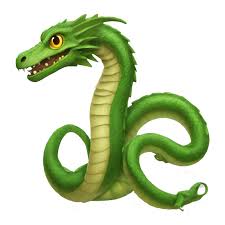
6) The Powers of this Fantastic Serpent
Like any self-respecting mythological creature, the Basilisk is not devoid of powerful powers that make it particularly dangerous. This monster is one of the most feared beasts in all of European folklore 😓. It doesn't matter if it's a snake or a Basilisk, this beast can kill you or seriously injure you in five different ways, without even getting close to you to devour you!
So before you approach this monster to face its mouth filled with rows of sharp teeth, or its beak and claws as hard as stone; let's see what you're going to have to survive...
A) The Basilisk's Deadly Gaze
The Basilisk's most famous weapon is its deadly gaze. Although the power of its eyes is debated in all the myths that concern it, if you meet its gaze, it's over for you 😵. Thanks to the latter, the Basilisk would have the ability to break stones in two, to wither plants, and to instantly kill any living creature that crosses its gaze. Remember this last point well...
We can clearly see here the parallel with Medusa, whose eyes could petrify anyone who crossed her gaze 👀. Not surprising since the Basilisk is supposed to have been born from the head of Medusa!
"Unleash your bold side with our Personality Snake Ring! Crafted from premium alloy and inlaid with shimmering gems, this eye-catching ring is available in US sizes 6, 7, and 8. Make a statement and let your unique style shine—get yours today!"

B) Toxic Breath
If by chance you manage to dodge the monster's gaze, you will have to face its putrid breath 🤢. The latter is so terrible that it can wither plants and paralyze an adult man. Some scholars even report that the monster can breathe fire through its nostrils (while we're at it!).
C) Basilisk Venomous Fangs
The venom contained in the monster's fangs is its third deadly asset ☠️. The basilisk is considered the most venomous creature that has ever lived. It is so venomous that if the beast drinks from a well, the water remains polluted for centuries; resulting in the death of the one who drinks it. A single scratch made by a basilisk's fang can result in instant death.
The Basilisk also has the ability to project its toxic venom up to 10 meters. In a medieval story, a mounted warrior managed to impale a Basilisk on his spear, and kill it ⚔️. Unfortunately the venom of the beast was so powerful that it infected the spear, then the warrior and his horse; causing their death to both.
It is said that only phoenix tears are an effective remedy against the venom of a Basilisk.
D) Shrill Hiss
You managed to avoid the beast's gaze, shield yourself from its breath and dodge its jet of deadly venom. Well done! But can you survive its hiss?
The Basilisk's hiss can drive men crazy, paralyze and even kill them if they are exposed to it too much 🤯. This is why the Basilisk is also called Sibilus ("whistle") in Latin. It is not really known whether its deadly effect is due to a noise so shrill that the eardrums explode, or whether the Basilisk's hiss actually has magical properties.
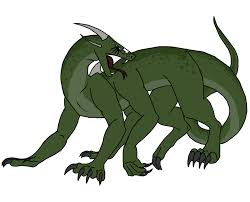
E) Basilisk's Evil Aura
You have managed to avoid all of the Basilisk's attacks, and you are now close enough to him to finally confront him! But you have condemned yourself by getting so close to him.
The Basilisk is such a malevolent and supernatural being that he constantly gives off an aura of death around him. He is not only a threat to humans, but also to life itself. This monster leaves a path of destruction wherever he goes. Plants are withered 🥀 and burned by his nauseating odor and evil spirit, birds catch fire if they get too close to him, and even other snakes flee from him.
There is only one plant that can resist the Basilisk's aura: rue 🌿 (herb of grace). This latter is therefore ideal for healing wounds acquired during a confrontation with the monster.
How was the basilisk killed?
In mythology and folklore, the basilisk was an incredibly dangerous creature, and its death often required clever or unusual methods due to its ability to kill with a glance, breath, or touch. Several legends describe different ways the basilisk was defeated:
-
By Reflection: One of the most famous methods of killing a basilisk was by using a mirror or reflective surface. Since the basilisk's deadly gaze could kill anything, it was said that showing it its own reflection would cause it to kill itself. Medieval stories describe heroes holding up mirrors to trick the basilisk into looking at its own lethal gaze.
-
Roosters: Another popular belief was that the crowing of a rooster could kill a basilisk. In some versions of the legend, people would carry a rooster with them to protect themselves from the basilisk’s deadly powers.
-
Weasels: Weasels were believed to be immune to the basilisk’s poison, and in some stories, they were sent into the basilisk's lair to kill it. This idea likely arose from the belief that weasels were particularly fierce and resistant to the basilisk's venom.
-
Using Weapons Indirectly: In other accounts, knights or heroes would use indirect methods, such as spears or arrows, to avoid looking directly at the creature, or they would approach it from behind to avoid its lethal gaze.
These methods reflect the creative ways that humans in ancient stories tried to overcome a creature with seemingly unbeatable powers.
7) Killing a Basilisk
Despite their terrifying powers and the fact that they are immortal, these mythological creatures are not invulnerable.
A) The Mirror and the Basilisk
According to some legends, these creatures can be killed by looking in a mirror. If you find yourself in the presence of one of these fearsome chimeras, only this weapon can save you. As its gaze is deadly to all living beings 💀, the monster will also perish if it is forced to look into the eyes of its reflection.
It is said that Alexander the Great ordered a shield polished like a mirror to be forged for him, so that he could protect himself from the Basilisks during his conquests towards the Indies 🛡️. Saint George also defeated a Basilisk by holding his shield so that the beast could see his own image, causing its death.
"Unleash your bold side with our Personality Snake Ring! Crafted from premium alloy and inlaid with shimmering gems, this eye-catching ring is available in US sizes 6, 7, and 8. Make a statement and let your unique style shine—get yours today!"

B) Basilisk against Weasel
The weasel is one of the two animals that the Basilisk fears. She is apparently immune to its deadly gaze, and can even survive a venomous bite if given proper medical treatment, based on rue leaves 🩹. Many old texts advise Basilisk hunters to throw a weasel into the beast's lair, or to bring the Basilisk in front of one of these small mammals. However, even if the weasel manages to kill the monster, it is often fatal to her as well.
C) The Rooster's Crow and its effect on the Basilisk
Perhaps it is linked to its way of being born, but the Basilisk is very vulnerable to the rooster's crow 🐓. The latter can either scare it away or kill it according to legends. This belief led medieval travelers to always take roosters with them for protection.
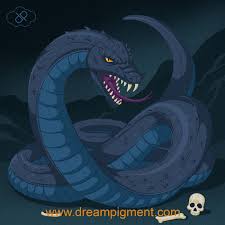
8) The Basilisk Snake in Harry Potter
A) Appearance of the Basilisk Snake in Harry Potter
If the Basilisk is so famous today, it is thanks to its appearance in the Harry Potter saga. Who has never heard of Harry Potter and the magical world created by J.K. Rowling in her books? The world-famous saga gives pride of place to the most spectacular mythical animals 😮.
The most memorable scene in the second Harry Potter film, The Chamber of Secrets, is the one where, although fatally poisoned by the Basilisk, Harry manages to use the beast's hook to stab Tom Riddle's diary 📓. The Basilisk is also mentioned in the Fantastic Beasts films.
In J.K. Rowling's universe, the Basilisk has much the same characteristics as in the legends of our world. The beast's gaze is deadly, and only phoenix tears can serve as an antidote to its venom 🧪. Venom which is so powerful that it is one of the rare substances that can destroy a Horcrux, an object in which Voldemort placed part of his soul. It is said that a Basilisk in the world of Harry Potter can live up to 900 years. However, it is very vulnerable to the crowing of the rooster.
Only the craziest dark wizards dare to try to raise a Basilisk. Because even if you can control the beast by speaking Parseltongue (the language of snakes 🐍), it remains very unpredictable and malicious. Even Aragog and the acromantulas fear this fantastic animal!
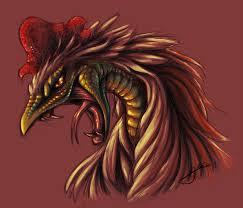
B) Basilisks: the two Monsters of Harry Potter
In the Harry Potter universe, two Basilisks are mentioned. The first of these mythical creatures is that of Herpo the Infamous, a Greek wizard adept at dark magic 😈. The latter is the first wizard to discover that a Basilisk is born from a chicken egg incubated by a toad. His knowledge and ability to speak Parseltongue allow him to raise the first Basilisk in History.
The creature present in the Chamber of Secrets is a female Basilisk. It was placed there by Salazar Slytherin himself, with the aim that it could one day purge Hogwarts of Muggle-borns 💀. The Basilisk in the chamber can only be controlled by Salazar's direct heir: Tom Riddle. Wizards who speak Parseltongue can understand it but not control it.
This Basilisk killed or petrified several people in Hogwarts (including Hermione and Moaning Myrtle) before Harry Potter killed it. During his fight against the beast, Harry was poisoned by one of its fangs. He only owes his survival to Fawkes, Dumbledore's phoenix, who gouges out the Basilisk's eyes and heals Harry's wound with his tears 💧.
"Unleash your bold side with our Personality Snake Ring! Crafted from premium alloy and inlaid with shimmering gems, this eye-catching ring is available in US sizes 6, 7, and 8. Make a statement and let your unique style shine—get yours today!"

9) The Romanian Vasilisc
There is a monster in Romanian folklore, similar to the Basilisk: the Vasilisc. This monster looks more like the serpentine form of the Basilisk. The Vasilisc was born in a poem from the 1970s. The legendary folk rock band Phoenix later turned it into a song 🎶.
The Vasilisc is very similar to the Basilisk: it has a toxic breath that can kill instantly and a deadly gaze. However, while seeing its own reflection in the mirror can kill it 😵, it does not seem to fear weasels or roosters.
This fantastical creature is still an exotic monstrosity in Romanian folklore today 👹, while for the rest of Europe the basilisk is just another fantastical monster.
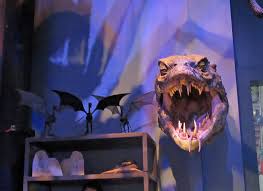
10) Symbolism of the Basilisk
The Basilisk generally represents evil and is a symbol of death. Christianity sometimes depicted the Basilisk (like other snakes) as a demon, or an apparition of the devil himself 👿. As a result, it was often depicted in murals or sculptures, especially in Eastern Europe. It is not uncommon for the Basilisk to be depicted being killed or defeated by a Christian knight, to symbolize the ability to overcome evil.
It was around this time that the Basilisk was incorporated into heraldry, particularly in the city of Basel in Switzerland, of which it became the symbol 🛡️. The Bishop of Basel was forcibly expelled during the Protestant Reformation, and the Basilisk was blamed for an earthquake in the city years before. Both unfortunate events became the symbol of the city.
Despite its cruel nature, this beast also became a symbol of power over time. In particular, the royal power 👑, which like the Basilisk, strikes down those who oppose it.
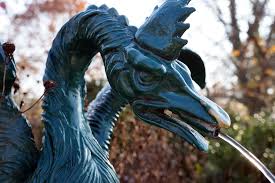
11) The Basilisk in Alchemy
In alchemy 🧪, the Basilisk represents the destructive force of fire, which decomposes the elements to allow the transmutation of metals. It is said that the power of the Basilisk is still active even after its death. When the monster is reduced to ashes, the latter retain magical properties highly sought after by alchemists in the 13th century 🌟. One legend describes an alchemist using the monster's ashes to transform silver into gold, while other myths suggest that the ashes are an important ingredient in the making of the legendary philosopher's stone.
Is the basilisk in Harry Potter a girl?
Yes, the basilisk in Harry Potter is referred to as female. In Harry Potter and the Chamber of Secrets, the basilisk is a gigantic serpent controlled by Tom Riddle (Voldemort) through his ability to speak Parseltongue. While the gender of the basilisk is not explicitly focused on in the book, J.K. Rowling confirmed in later interviews that the basilisk is female.
The basilisk in Harry Potter possesses many traits from the mythological creature, including the ability to kill with its gaze. However, in the series, characters who see its eyes indirectly (such as through a reflection or through a ghost) are only petrified rather than killed.
"Unleash your bold side with our Personality Snake Ring! Crafted from premium alloy and inlaid with shimmering gems, this eye-catching ring is available in US sizes 6, 7, and 8. Make a statement and let your unique style shine—get yours today!"

12) Etymology of the word "Basilisk"
The term "basilisk" comes from the Greek βασιλίσκος (basiliskos), which translates to "little king" 👨🎓. In Latin, the creature is called Regulus, and in English basilisk.
The etymology of the term "cocatrice" is more complicated to know 🤔. This term appeared in many ancient languages of Europe in the Middle Ages. In Old French, we call this animal "Cocatris". The term then evolved to become the cocatrice or cocatrix, which we know today.
It is common to use the term basilic or cocatrice to designate the same animal. But basically these two words designate different creatures ❌ even if it is true that they look very similar.
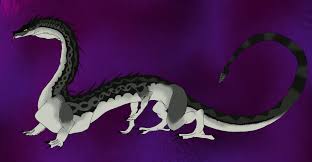
13) References to the Basilisk Serpent
A) Literature
The basilisk has been an animal present in literature for centuries. Geoffrey Chaucer presented a basilicoq (as he called it) in his Canterbury Tales, as did William Shakespeare in Richard III 📖. These two works, precisely, mark the passage of the Basilisk from the scientific domain to the folklore domain.
The poet Percy Bysshe Shelley in his Ode to Naples alludes to the basilisk:
- "Be like the imperial basilisk,
- To kill your foe with invisible wounds!
- To watch oppression, to that fearful risk,
- Horrified that it passes from the earthly disk.
- Fear not, but watch, for free men grow more powerful,
- And slaves weaker, looking at their foe."
A basilisk is also mentioned in chapter 16 of Voltaire's Zadig. Bram Stoker alludes to the beast's deadly gaze in the fourth chapter of Dracula, when the main character makes his first attempt to kill the vampire count. ⚔️
In contemporary times, the most famous basilisk comes from the Harry Potter series of novels. In the second volume: Harry Potter and the Chamber of Secrets, author J. K. Rowling presents the basilisk as a creature under the control of evil wizards. 🧙♀️
B) Visual Arts
The basilisk is a common ornament in great works of art, especially from the 14th to the 16th century in Europe. Although the monster rarely appears as a centerpiece, it is often found among the demons in the architectural engravings of great cathedrals ⛪, or in the decoration of family coats of arms.
14) The Basilisk in Modern Fantasy
Fantasy culture is experiencing a real boom these days. This is partly due to the popularity of certain series like Game of Thrones or Vikings, as well as video games like God of War, where the hero faces a Basilisk ⚔️🐍. However, the Basilisk is rarely present in video game works in general.
We can note an appearance of the Basilisk in various role-playing games like Dungeons and Dragons and Magic: The Gathering 🔎. But most books and video games are content to create monsters borrowing only part of their appearance or powers from the Basilisk.
When a Basilisk is present as is in a fantasy work, it often appears in its giant snake form. The Basilicoq is rarely represented ❌.
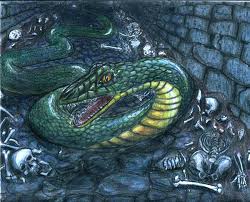
15) The Basilisk, a Lizard in Real Life?
There is indeed a real Basilisk! Well, admittedly this one doesn't have the powers of its dangerous cousin, and doesn't pose a threat. 😂
The Basiliscus Plumifrons is a genus of small green lizard belonging to the Corytophanidae family. The green basilisk 🦎, also called the feathered basilisk, is often called the "Jesus Christ lizard" for its ability to run on the surface of the water. It achieves this feat thanks to its small size, its legs that give it a wide contact with the water, its low weight, and a complex movement allowing it to run on the water without sinking. It can reach 10km/h this way.
If a man wanted to achieve the same thing, he would have to move at a speed of 110km/h 💨, and have muscles 15 times more powerful than those of a normal human.
Basiliscus Plumifrons Jesus Christ Lizard
And there you have it, this fabulous (but very mean) animal has no more secrets for you now! Don't hesitate to tell us what you thought of this article in the comments. And if you want to add information, you're welcome too. 😉
If snakes as mythological animals fascinate you, we advise you to go and consult our article on the Serpent in Mythology, or the one on the Dragon Serpent. We detail the most legendary snakes of all cultures, and next to some divinities, even the Basilisk pales in comparison!
"Unleash your bold side with our Personality Snake Ring! Crafted from premium alloy and inlaid with shimmering gems, this eye-catching ring is available in US sizes 6, 7, and 8. Make a statement and let your unique style shine—get yours today!"

Dive into the fascinating world of snakes and explore our other articles now!
Stay Updated!
Don't miss out on the latest insights, tips, and exclusive content. Subscribe to our blog newsletter today and be the first to know about new posts, special offers, and more!
Join our community now—just enter your email below to stay connected.